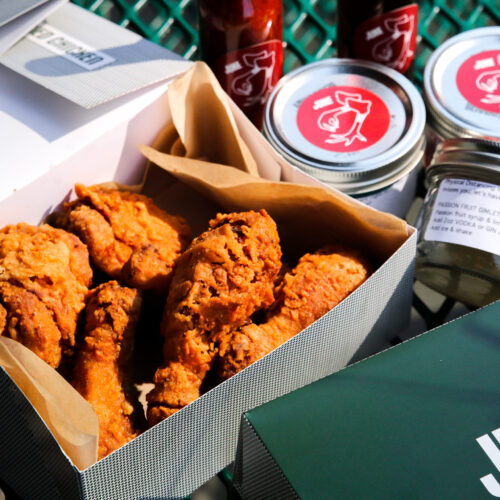How Restaurants Can Diversify Their Income Streams
Whether you’re a takeout-only restaurant, ghost kitchen, or home bakery, food establishments are consistently on the lookout for clever ways to build revenue outside of the regular offerings. With a robust product line and multiple ways to order takeout, Vancouver-based Juke Fried Chicken continues to diversify its income stream with success.
As diners embrace the ease and convenience of online ordering, consider expediting this process by offering them a few different ways to do it. Besides ordering directly through Juke’s website, diners can order takeout in-store for pick up, or get it delivered via a third-party apps like UberEats, Doordash and Skip The Dishes. Justin Tisdall, co-owner of Juke Fried Chicken and The Chickadee Room, has found that Juke enjoys the most success from online ordering and third-party delivery apps.
“This is the easiest and best way to get our products in people’s homes — hot and fresh and showing its best,” says Tisdall.
Launching a retail product line is another way restaurants can generate revenue and complement the business, whether this means offering apparel, pantry staples like canned soup and boxed pasta, consumables such as table sauces and spice blends, or meal kits that allow customers a more hands-on way to experience your brand. Though launching a retail line can seem ambitious, the positive is that this is achievable across a wide range of budgets, from introducing your products on grocery delivery apps to launching a full lineup of goods at the grocery store.
Juke features a product line that’s offered on their website and through third-party stockist Legends Haul. When considering developing a product line, Tisdall suggests starting with a small selection of your most outstanding offerings, especially in a saturated market.
“You can always add more products later, but start with what you do best.”
Juke began by offering their popular table sauces, including the Hot Sauce and Beer Spiced Honey. During the pandemic, they used time and space to expand their product line. In partnership with the next-door cocktail and snack bar, The Chickadee Room, they released a line of cocktail kits for customers to bring The Chickadee Room experience home.
As a small business owner, Tisdall stresses the importance and benefits of partnering with other local vendors, restaurants and suppliers to offer exclusive products.
“As we work with other local businesses, the community strengthens. Collaborating with other businesses also allows us the chance to create items that we don’t have the ability to make within our restaurants.”
Local ingredients are used in the creation of some of their sauces, and Juke has also collaborated with BETA5 Chocolates to produce a caramelized white chocolate bar.
Once you’ve decided on the product offerings that suit your business best as well as the most appropriate retail outlets, advertise your new offerings with the help of press releases and social media so customers can order those goods off the menu or purchase them at your storefront.




